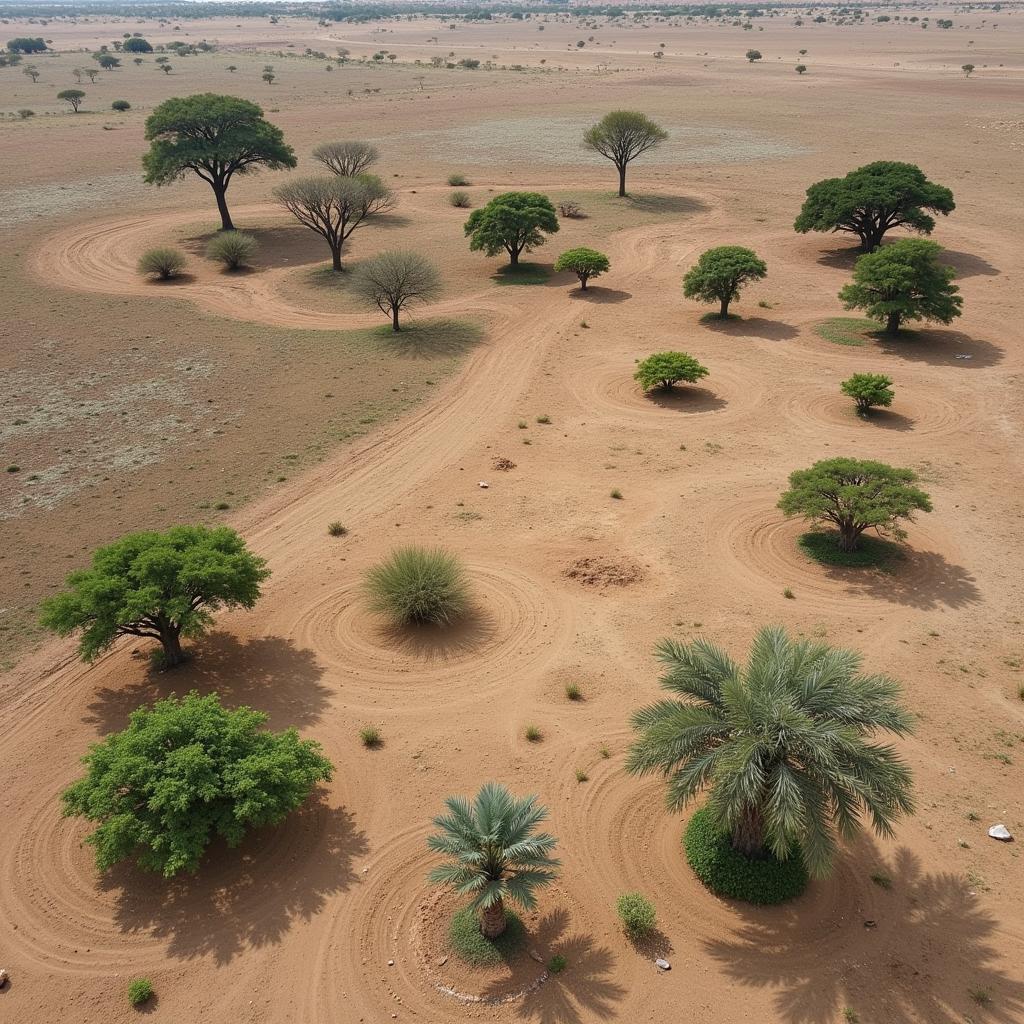Exploring the African Grey Parrot Habitat: A Deep Dive
The African grey parrot, admired for its intelligence and famed for its mimicking abilities, hails from the dense forests of Central and West Africa. Their natural habitat plays a crucial role in their survival, providing them with the necessary resources and conditions to thrive. Understanding the African Grey Parrot Habitat is not only fascinating but also crucial for conservation efforts and responsible pet ownership.
Where do African Grey Parrots Live?
 African Grey Parrot in Rainforest Canopy
African Grey Parrot in Rainforest Canopy
African grey parrots are not found just anywhere in Africa. Their range is concentrated in specific regions within the continent. Let’s delve deeper into their primary habitats:
Rainforests: A Lush Paradise
The heart of the African grey parrot habitat lies within the equatorial rainforests. These forests, characterized by high rainfall and dense vegetation, offer the ideal environment for these birds.
- Abundant Food Sources: Rainforests provide a rich and diverse array of food for African grey parrots, including fruits, seeds, nuts, and flowers.
- Protective Canopy: The dense canopy of the rainforest provides shelter from predators and the elements, offering a safe haven for nesting and roosting.
- Ideal Climate: The warm, humid climate of the rainforest is perfectly suited to the physiological needs of African grey parrots.
Forest Edges and Clearings: Exploring New Opportunities
While African grey parrots primarily inhabit dense rainforests, they are also known to venture into forest edges and clearings. These areas offer additional foraging opportunities.
- Variety of Food Sources: Forest edges and clearings often feature a different mix of plants and trees, providing access to a wider variety of food.
- Social Interactions: These areas often serve as gathering spots for African grey parrots, facilitating social interactions and communication.
Threats to the African Grey Parrot Habitat
 Deforestation Impacting African Grey Parrot Range
Deforestation Impacting African Grey Parrot Range
Sadly, the African grey parrot habitat faces several threats, primarily from human activities:
- Deforestation: The rampant clearing of rainforests for agriculture, logging, and mining is the most significant threat. Loss of habitat directly translates to fewer resources and nesting sites for these parrots.
- Illegal Pet Trade: The high demand for African grey parrots as pets fuels illegal trapping and trade, decimating wild populations.
- Climate Change: Alterations in rainfall patterns and increased temperatures due to climate change can disrupt the delicate balance of the rainforest ecosystem, impacting food availability and nesting success.
Conservation Efforts and What You Can Do
Protecting the African grey parrot habitat is crucial for the survival of this intelligent species. Several organizations and initiatives are working tirelessly towards this goal:
- Protected Areas: Establishing and effectively managing protected areas within the parrots’ range is essential to safeguard their habitat.
- Combating Illegal Trade: Enforcing stricter regulations and cracking down on the illegal pet trade are vital to curbing the capture and trafficking of wild parrots.
- Sustainable Practices: Promoting sustainable forestry practices, responsible land management, and raising awareness about the importance of biodiversity conservation are crucial long-term solutions.
You can make a difference too:
- Support Ethical Breeders: If you choose to welcome an African grey parrot into your home, ensure you source it from a reputable breeder who prioritizes ethical breeding practices and the well-being of their birds.
- Spread Awareness: Educate yourself and others about the plight of African grey parrots and the importance of habitat conservation. Support organizations actively involved in protecting these birds and their homes.
FAQs About African Grey Parrot Habitats
Do African grey parrots live in groups?
Yes, African grey parrots are highly social birds that live in flocks ranging from a few individuals to hundreds of birds.
What is the biggest threat to African grey parrots?
Deforestation is the most significant threat to African grey parrots, leading to habitat loss and fragmentation.
Can African grey parrots survive outside of rainforests?
While they can adapt to some extent, African grey parrots primarily rely on rainforest ecosystems for their survival.
How can I help protect African grey parrot habitats?
Supporting conservation organizations, promoting sustainable practices, and making responsible choices as a consumer can contribute to their protection.
Are African grey parrots endangered?
Yes, African grey parrots are listed as Endangered on the IUCN Red List, signifying a high risk of extinction in the wild.
Delve Deeper into the World of African Birds
Interested in learning more about the captivating world of African birds? Explore these related articles:
- African Bird Sounds Free Download: Immerse yourself in the rich tapestry of African bird calls.
- African Wild Ass: Discover the fascinating African wild ass, another remarkable inhabitant of the African continent.
- African Grey Parrot Food in the Wild: Learn more about the diverse diet of African grey parrots in their natural environment.
- African Chat Bird: Explore the vibrant world of African chat birds, known for their striking colors and melodic songs.
- African Grey Parrot Supplies: Find everything you need to provide a stimulating and enriching environment for your pet African grey parrot.
Understanding the African grey parrot habitat is not just about appreciating the beauty of nature; it’s about recognizing our responsibility to protect these intelligent and magnificent creatures. By supporting conservation efforts and making informed choices, we can contribute to ensuring that the rainforests continue to echo with the calls of the African grey parrot for generations to come.

